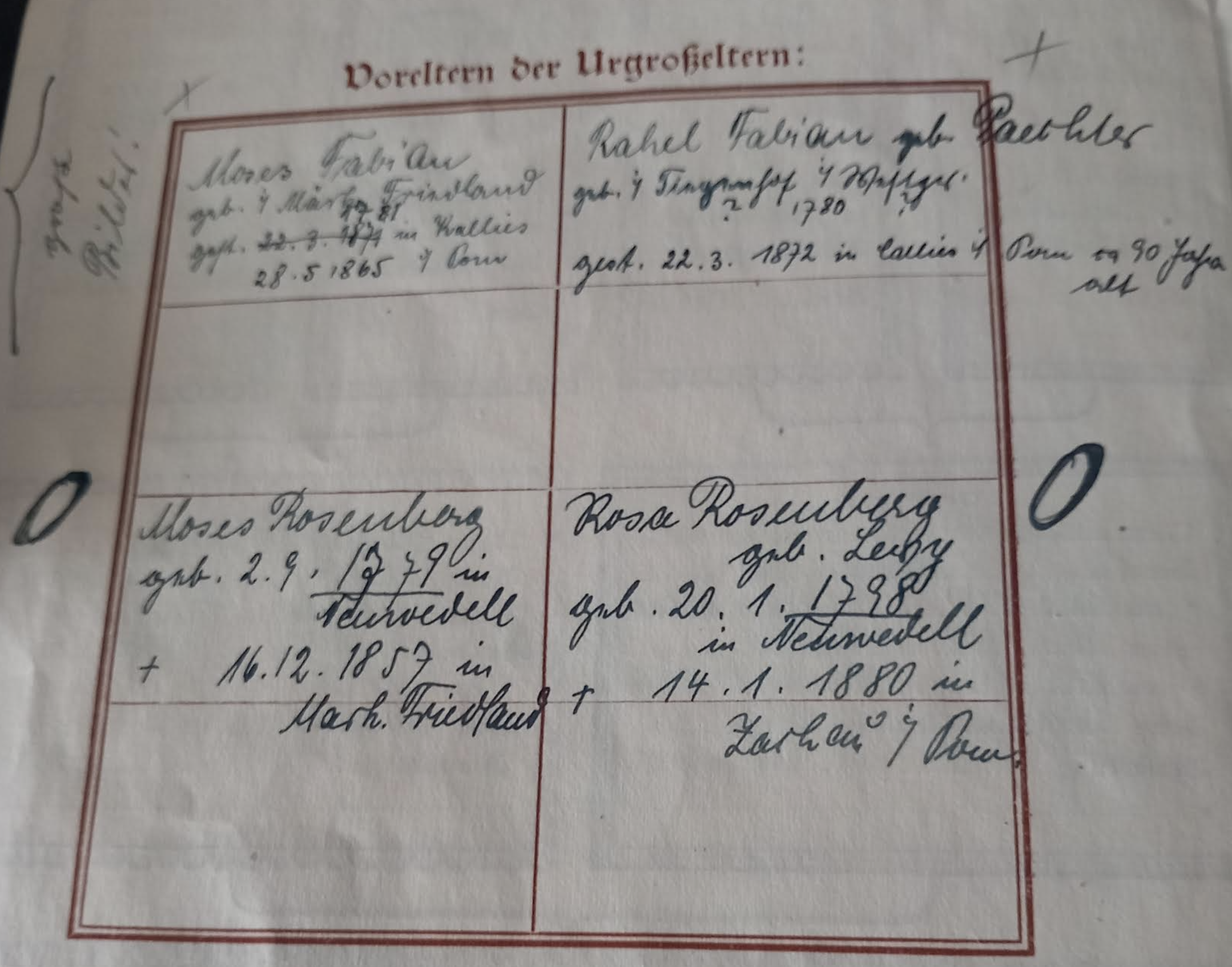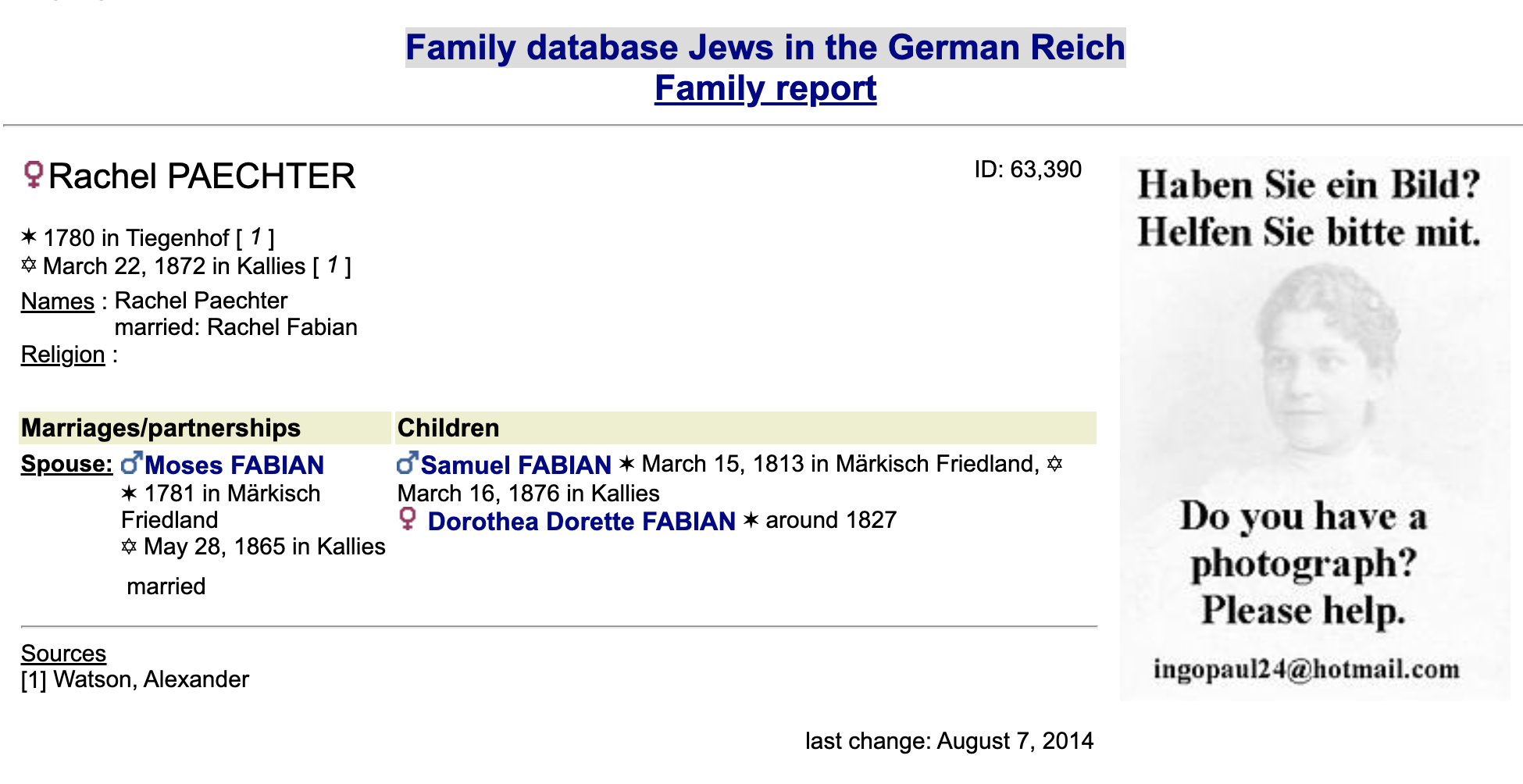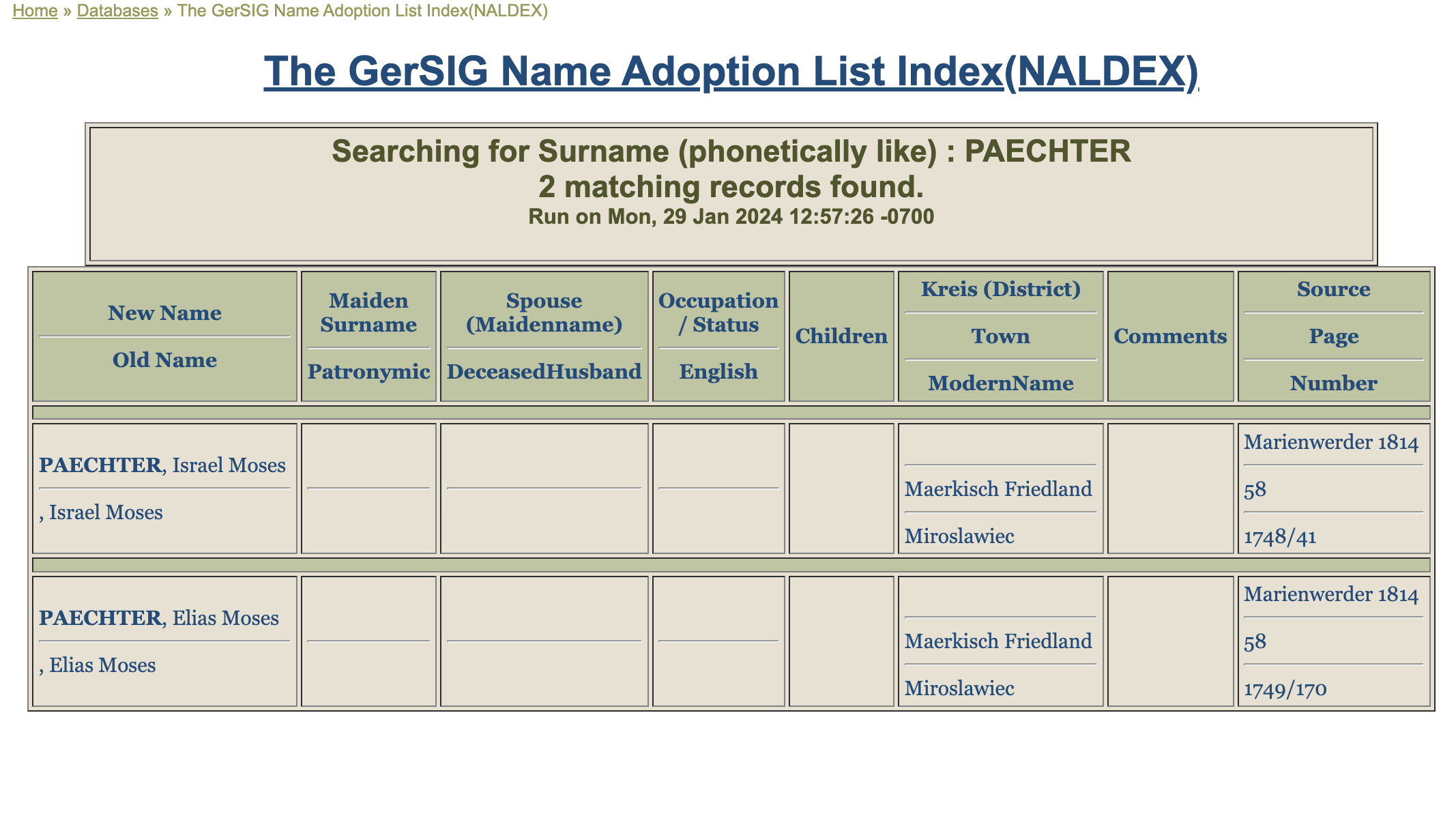The Paechters of Märkisch Friedland—how are we related?
Just before I slacked off with my posting at the end of last year, I finally got back in touch with a contact on Geni who had been reaching out to me for some time. He is one of the few who found his way to this website before it was live. He is Eric Michael Elias, a Britisher born in 1949 now residing in Israel.
His mother's Fabian family has an interesting history and traces back to a Moses Fabian, born in 1781 in the Pomeranian town of Märkisch Friedland, today Miroslawiec in Poland. According to a family tree brought out of Germany by Eric's mother in 1938 (see image), Moses Fabian's wife was a Rahel Paechter, who was born in 1780 in Tiegenhof. This is consistent with a record in the Family Database of Jews in the German Reich (aka the Ingo Paul database) and with the Fabian-Elias tree on Geni,
We don't have details on the marriage but the first child of Moses and Rahel was Samuel Fabian, born in Märkisch Friedland in 1813, so we can surmise that she moved to his town to be married. Later they settled in the nearby town of Kallies (Kalisz Pomorski) and raised a large family and lived into old age.
I previously wrote about this Rachel Paechter and her possible connection to our family in December 2020. This post extends that line of reasoning with some new informed speculation.
A couple of points to keep in mind here. Tiegenhof and Märkisch Friedland are not close to each other. They are more than 150 miles apart on modern roadways, not an easy distance to travel at the beginning of the nineteenth century. Also, none of the people we are talking about acquired a surname until 1812 or after, when established Jewish families adopted certain German conventions, including surnames, in exchange for Prussian citizenship.
So Rachel did not know she was a Paechter when she married Moses. It was only a few year later that her family back home and her husband's family in Märkisch would choose the surnames that would be passed to their future generations.
We learned about surname adoption in West Prussia earlier on this blog when we discovered the roots of our Wohlgemuth family in Stargard Gdanski, also in the region. One thing we learned was that surnames could be adopted by unrelated families in nearby towns but were generally unique to one family group within a single town. Thus, there would not have been unrelated Paechters from Tiegenhof. It seems certain that Rachel would have been a daughter of an older generation of our family that we haven't yet discovered.
Our ancestor Julius Paechter, Hebrew name Yehuda, birth date unknown but estimated around 1815, is our oldest documented Paechter. However, this Rachel is of an older generation, the right age to be a sister of Julius's father, thus his aunt.
There are 50 unique localities represented in the West Prussia 1812 Citizenship Database. Tiegenhof is not one of them, though a number of nearby towns such as Neutiech, Preußisch Holland, Marienwerder and Elbing are included. I don't know if that is because of patchwork political control of the territory during the Napoleanic era or another reason.
Thus, we see no Paechter family from Tiegenhof in the 1812 citizenship database. But just guess where there are two Paechters listed from another West Prussian town?
Yes, they were from Märkisch Friedland. Israel and Elias Paechter, apparently brothers, both the sons of Moses. In 1814, they officially became citizens and took the name Paechter, meaning tenant, probably in the sense of tenant farmer. Above you see the JewishGen records from the GerSIG Name Adoption Index, with original data from the citizenship list.
Now imagine that Moses from Märkisch had a brother or an uncle in Tiegenhof, where another branch of the same family was doing well in the dry goods business. When a daughter of the Tiegenhof branch was matched with a husband in about 1810, it was arranged through the family network to an eligible groom, Moses Fabian, in Märkisch Friedland.
To make things more interesting, the son of Elias Moses Paechter would seem to be the Hirsch Elias Paechter who raises his family in another Pomeranian town that we know something about, Kolberg, on the Baltic coast and 75 miles north of Märkisch Friedland.
It seems entirely possible that Hirsch was associated personally and/or in business with Louis Levin Katz, and that is how a match was made in 1898 between Louis's daughter Betty Katz and another Tiegenhof Paechter descendant, Isaac Wohlgemuth, our great grandparents.
That suggests that Isaac's mother Friederike Paechter (in Elbing with her sons in 1898) and Hirsch Paechter in Kolberg were in touch with each other to arrange the match with Louis Katz.
We still don't have evidence of the earlier generations of the family in Tiegenhof, or proof of the exact relationship of Rachel Paechter Fabian to the Tiegenhof Paechters. But we have the general outlines of a likely story about our family branch in three West Prussian towns that explains not one but two long-distance marriages.
That might not be entirely satisfying for Eric Elias, but he and I are still on the case. It still feels like we may find the missing link. I plan to send him this article and ask him what he knows about Alexander Watson, who is given as the source of the Rachel Paechter information in the Ingo Paul database. If he doesn't know, I'll approach Ingo directly.



